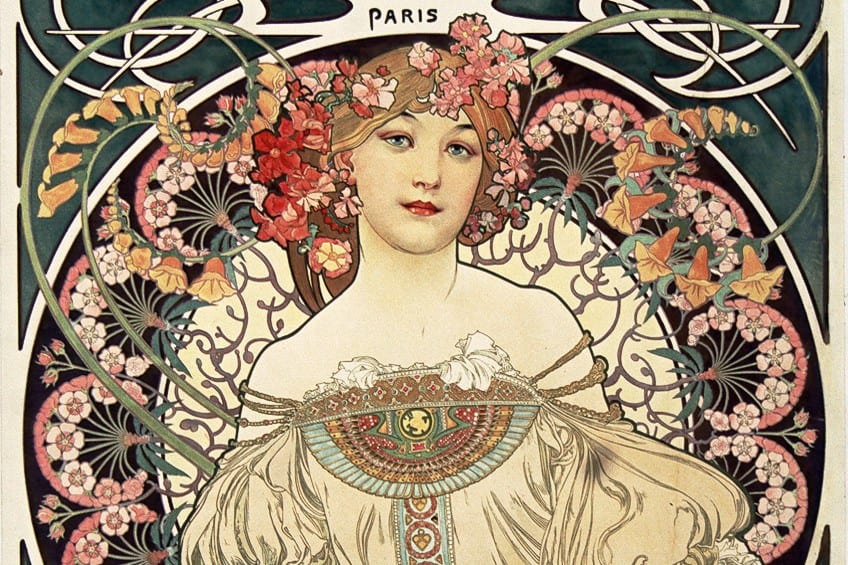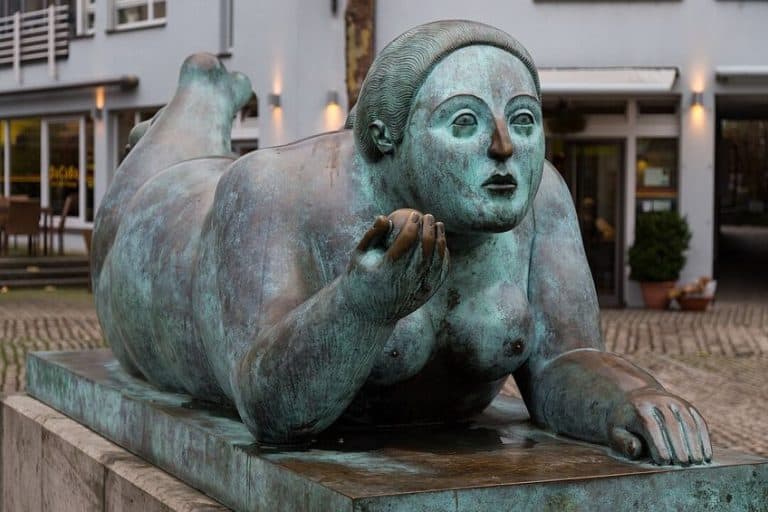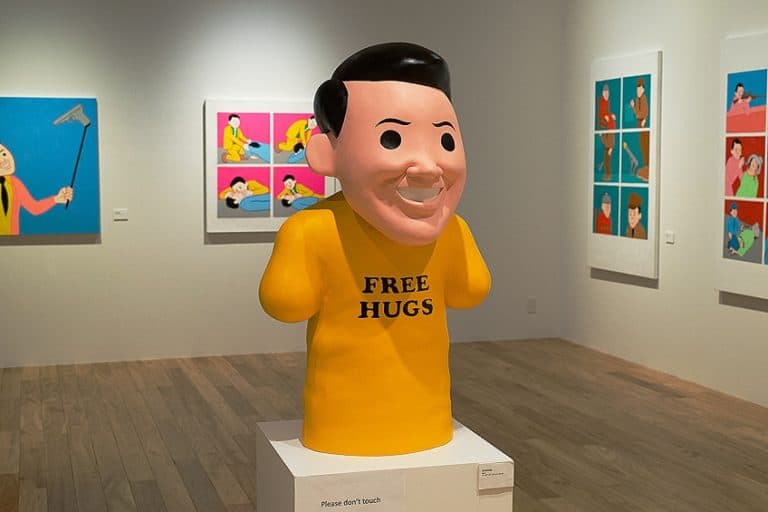Alphonse Mucha – Discover the Famous Art Nouveau Artist
Who is Alphonse Mucha and why is Alphonse Mucha important? Alphonse Mucha was an Art Nouveau artist from Czechoslovakia most known for his iconic theatrical posters. Alphonse Mucha’s art included advertisements, illustrations, designs, and decorative panels, and are regarded as some of the most recognized and renowned images of the Art Nouveau era. In the second half of his artistic career, Alphonse Mucha’s paintings depicted the history of the Slavic people, which he considered to be his most important period of creative output.
Who Is Alphonse Mucha?
| Name | Alphonse Mucha |
| Nationality | Czech |
| Date of Birth | 24 July 1860 |
| Date of Death | 14 July 1939 |
| Place of Birth | Ivancice, Czechia |
Alphonse Mucha’s artistic output spanned a range of media, such as jewelry, furniture, and theatrical sets, yet, it was his commercial Art Nouveau posters that he was most well known for. He spent the majority of his career working and living in Paris and Vienna, as well as a six-year period in Chicago where he lectured at the Art Institute.
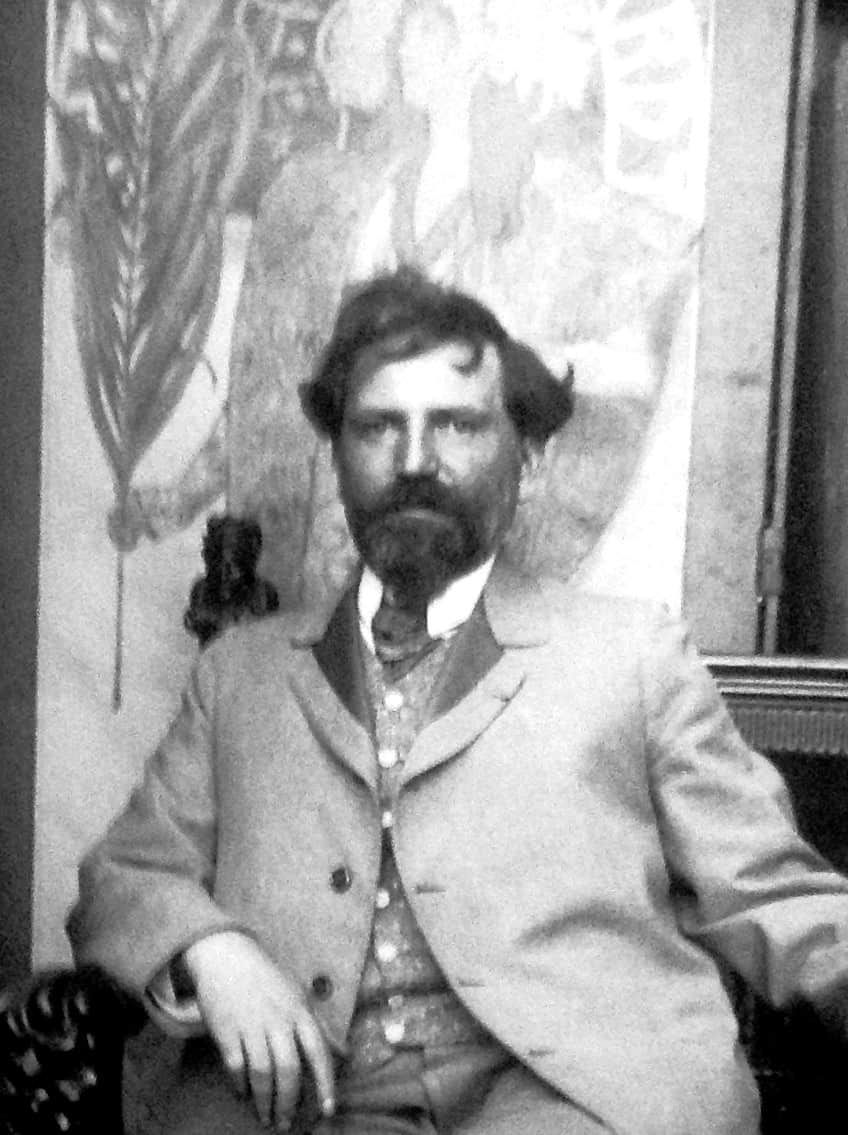
It was during this period that he started to introduce his personal interpretation of Art Nouveau or “new art” to an American audience. Alphonse Mucha’s paintings epitomized Art Nouveau’s focus on elaborate decoration and natural forms.
The Life of Alphonse Mucha
As was the case with the majority of the artists working within the Art Nouveau movement, women were a prominent subject in Alphonse Mucha’s art, especially the concept of the “new woman”. It was a subject that served decorative and allegorical functions. For Mucha and his associates, the concept of the feminine spirit was seen as a natural and warm antidote to the overtly masculine and cold industrialized era.
Due to his use of a variety of media, Alphonse Mucha’s artworks were able to extend beyond the realm of “high art” and reach a larger public audience.
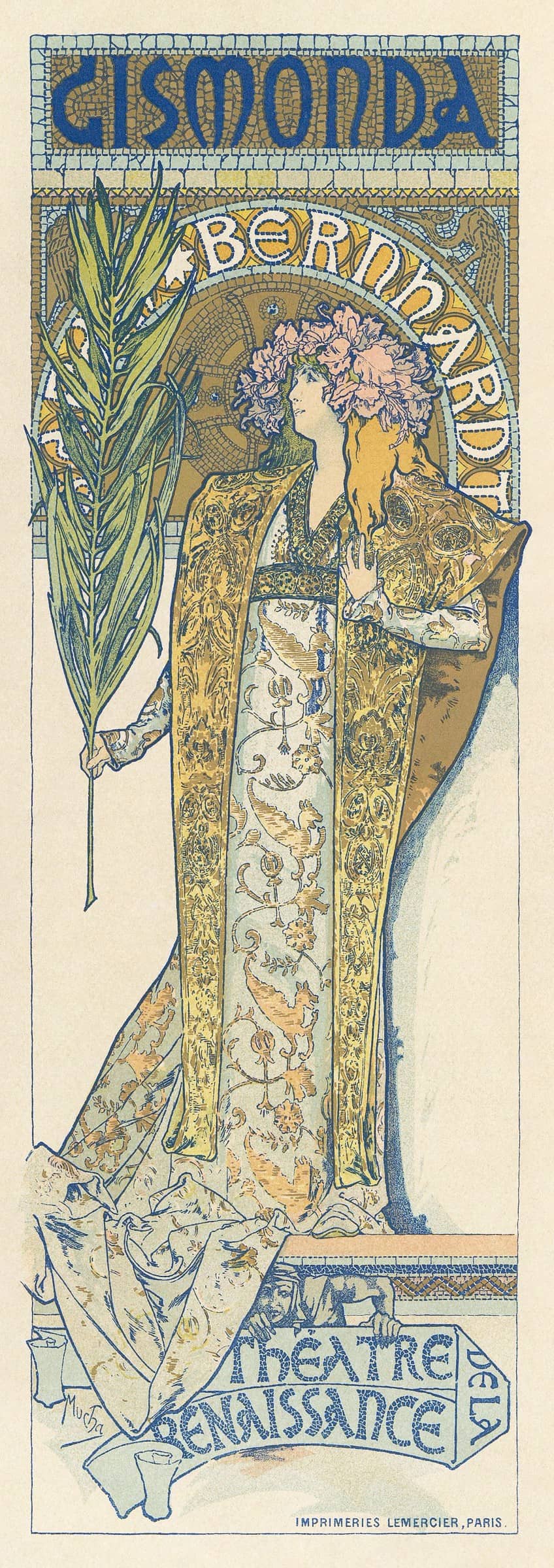
He turned everyday objects such as promotional posters, furniture, and even wallpaper into works of art. However, despite his famed association with his iconic Art Nouveau posters, in his later years, he began producing works inspired by the traditions and history of Czech culture.
Childhood and Education
Alphonse Mucha grew up in the shadow of two major cultural forces: the Slavic ambition to achieve independence from the Habsburg Empire and the Catholic Church. Mucha’s earliest memories are of Christmas tree lights and he was fascinated with color and light from a very early age. His initial interest in painting was sparked by a baroque fresco that he had often seen in his local church, and he traveled to Vienna to work as a theater set painter.
In the thick of the Austrian capital’s art explosion, he became familiar with and deeply appreciated the artworks of Hans Makart and other notable artists.
To make ends meet, he took on portrait commissions, which led him to a significant patron, Count Khuen-Belasi, who paid him to create murals at Emmahof Castle. While working at the castle, Alphonse Mucha’s simultaneous impoverishment and renown became more evident.

Because of his lack of income, he owned only a single pair of trousers that became so worn that a little group of society girls gave him a new pair. Alphonse Mucha’s fine art instruction was funded by Count Khuen-Belasi in Munich, where he kept working as an artist, most significantly for Krokodil magazine, where he established his characteristic calligraphic style.
He was in Paris by 1887, training at the Academie Colarossi as well as the Academie Julian. Artists like Bonnard and Vuillard were gaining prominence in this area and they developed new insights into what art might achieve.
Art grew to be regarded as a pursuit capable of unveiling great mysteries, as well as something to be incorporated into everyday life and its objects. These concepts developed into what would become the Art Nouveau philosophy of art in ordinary life.
Early Training
Mucha managed to make a modest living by illustrating publications and advertising posters. On the Rue Grande Chaumiere, he and Paul Gauguin shared a workspace. Mucha had the workshop set up so that as the door opened, beautiful music would begin to play. The studio was bursting to the seams with exotic artifacts and bohemian authors, painters, and performers who gathered there to create and play. The lighthearted and free-spirited atmosphere of their workshop is captured in a famed portrait of Gauguin playing the Harmonium while wearing no pants.
Mucha first pursued his curiosity with the occult at this time with August Strindberg, and he participated in hypnosis and psychic experiments with Camille Flammarion and Albert de Rochas.
Mucha rose to prominence in 1894 with his Gismonda theater poster. Sarah Bernhardt, the starring actress, was recognized worldwide, and Mucha instantly became famous as a result of his affiliation with her. Bernhardt hired him, and Mucha designed several advertising costumes, posters, and stage sets for her. His style became so renowned that collectors would steal his posters off billboards. Mucha believed that art should do more than just be aesthetically pleasing, though. and that it should express a spiritual message and inspire its audience. Therefore, mass-produced art appealed to him because it had the potential to reach and influence more people.
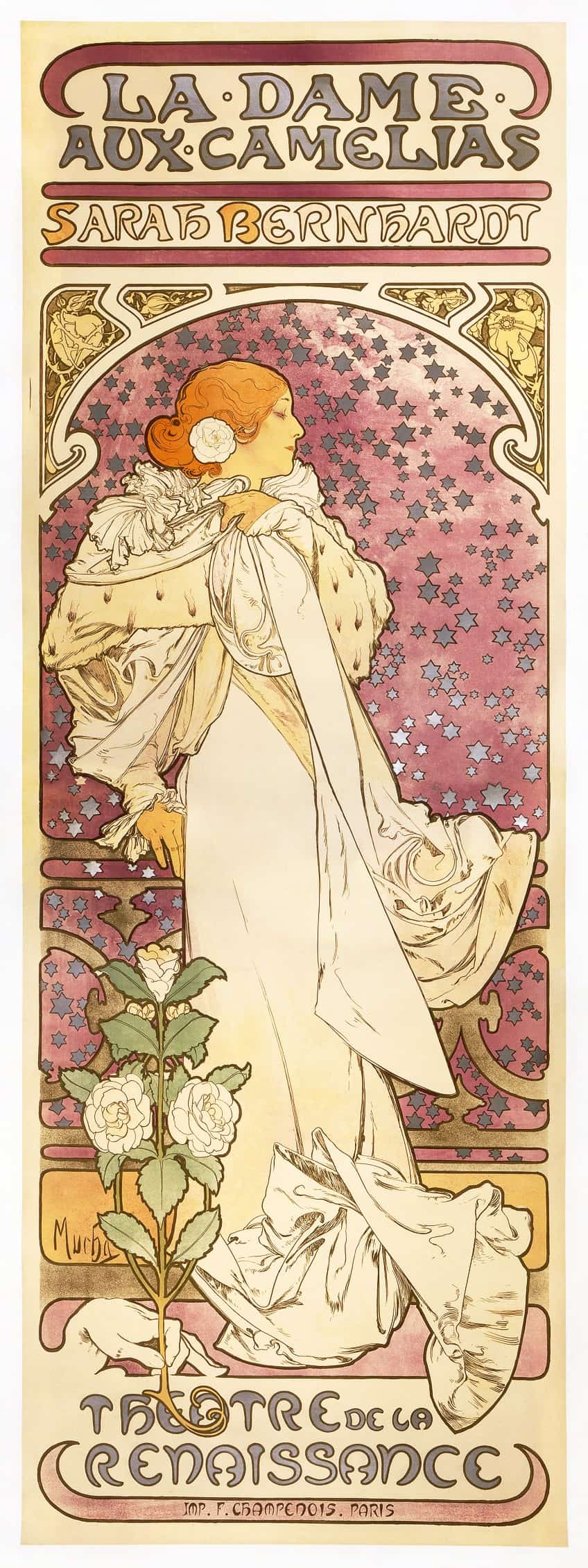
He blurred the line between fine and commercial art, business, and philosophy, in his advertisements for beer, perfume, cookies, bicycles, and cigarette papers. Mucha created his distinct style by drawing inspiration from the Pre-Raphelites, Japanese wood carvings, and Hans Makart. With bending, sweeping lines and Byzantine borders, letters, and frames, his style was opulent and organic, elegant and energetic. His signature women featured curves, long flowing hair, pastel-colored robes, and usually a halo of illumination or flowers, reminiscent of the haloes on religious images he observed as a child.
Alphonse Mucha’s women were full of life; unlike the Symbolist “femme fatales”, his women are not a perilous temptation to be eschewed. His unique decorative panels pushed art even deeper into people’s homes.
He also experimented with sculpting and collaborated with jeweler Fouquet to create beautiful jewelry from ivory, gold, and precious stones, inspired by contemporaries like Auguste Rodin. At Fouquet’s Rue Royale boutique, he even built a dazzling “Mucha world” with stained glass, statues, fountains, mosaics, and lighting that transformed shopping into an immersive theatrical spectacle. He was recognized as the world’s best decorative artist after exhibits in Prague, Vienna, Munich, Budapest, Brussels, and London. He published two template books to disseminate his concepts.
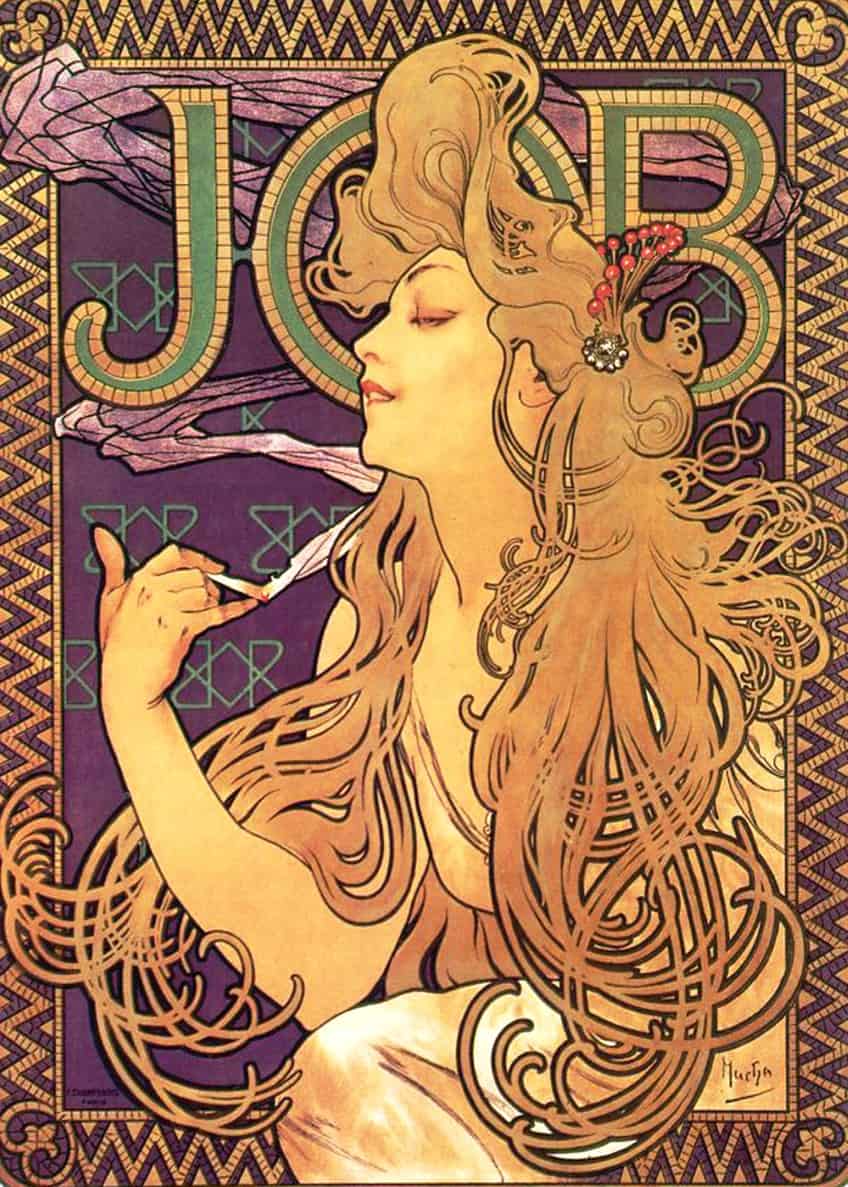
These publications, which contained designs for wallpaper, jewelry, stained glass, furniture, and figures, were known as the Art Nouveau bible. Mucha, despite his involvement with Art Nouveau, rejected the title, claiming that art was timeless. Mucha’s spiritual ideas were addressed in his illustrated book Le Pater (1899), which was a reimagining of the Lord’s Prayer embellished with Catholic, Byzantine, and Masonic symbols.
Mucha’s conviction in the ethical and political value of art is reflected in the book. It was pointless if “my motherland was supposed to satiate its thirst on water from a ditch”, as he phrased it.
He characterized fame as “depriving me of my time and compelling me to perform things that are so far removed from those I dream about”. His creative ambition was to produce an epic painting cycle that would function as a stunning depiction of Slavic history and would encourage the Slavic struggle for independence.
Mature Period
Mucha traveled to the United States several times in search of patronage for his massive painting epic. Mucha ultimately discovered the person who would serve as his patron for the next 20 years, Charles Crane. Mucha moved to Prague in 1910 and focused on his Slav Epic while also working on assignments such as the Lord Mayor’s Hall ceiling.
Mucha’s wish came true in 1918 when Czechoslovakia was acknowledged as an independent nation. He was overjoyed and started creating the new country’s banknotes, postal stamps, and coat of arms.
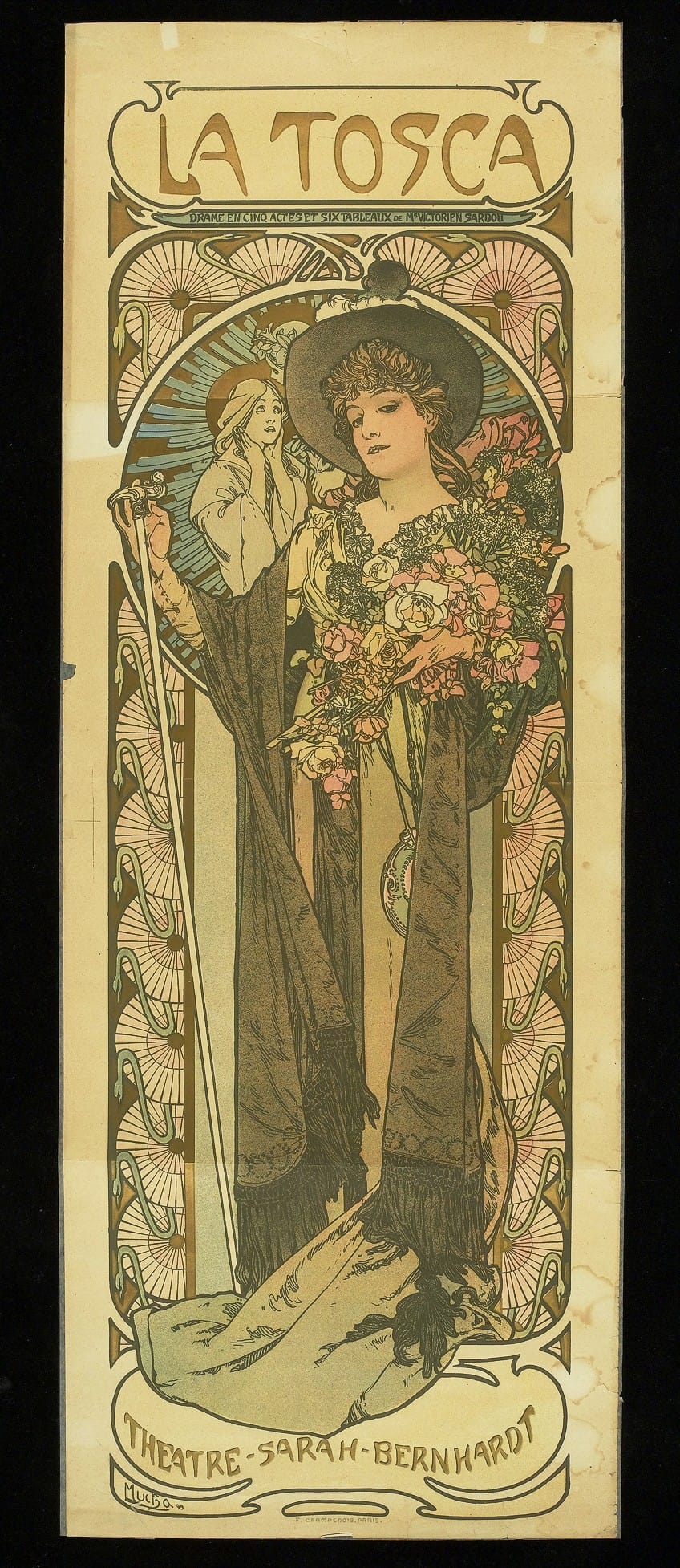
He worked on his huge paintings at a studio in Zbiroh Castle, some of which were 6×8 meters in size. His work involved research preparation, so he took several trips around the Balkans and met with historians to make sure that every event and costume was represented authentically. His works drew international attention to the Pan-Slavic worldview.
The first stage of his epic work was on tour in the United States in 1919, drawing 50,000 people each week.
Later Period
Mucha finished his last piece in the series in 1926, depicting Christ protecting the new republic beneath a rainbow of peace. At the nation’s 10th anniversary festivities in 1928, he presented the Slav Epic to the City of Prague and went on to create a beautiful stained glass window in St. Vitus Cathedral.
The rise of the Nazis started to change his feelings of safety as the decade proceeded, but he still believed in the power of art.

He created a triptych, The Three Ages (1936 – 1938), to advocate for wisdom, reason, and love as the routes to peace. Mucha’s dreams, efforts, and, eventually, life were dashed when the Nazis invaded Czechoslovakia in 1939. As a “reactionary”, he was investigated by the Gestapo and died in 1939, already ill from a lung infection.
The Legacy of Alphonse Mucha
Alphonse Mucha’s artwork fell out of popularity for many years after his death, while modernist and abstract art grew more fashionable. His son, author Ji Mucha, spent most of his life writing about him and promoting his artwork. The new authorities in his own nation were uninterested in Mucha. Before being displayed at Moravsk Krumlov, the Slav Epic was rolled and preserved for 25 years. The Slav Epic is presently on exhibit in the National Gallery in Prague, which also houses the majority of his work.
Alphonse Mucha’s paintings, however, have seen a resurgence of interest and acclaim in recent decades. Collectors today prize his posters and other creations, and his legacy has impacted innumerable artists and designers across the world.

Mucha’s impact may be found in everything from modern graphic design to interior design and fashion, making him one of the 20th century’s most iconic and influential painters. Mucha’s style was often replicated on British posters for The Incredible String Band Pink Floyd during the 1960s Art Nouveau resurgence. In the United States, one poster promoting a 1966 San Francisco gathering was an exact replica of Mucha’s Job Cigarette Paper (1896).
Mucha has also been cited as an inspiration by Stuckist artist Paul Harvey, as well as on fantasy and cartoon works by Japanese Manga artists such as Naoko Takeuchi.
Alphonse Mucha’s Art Style
Alphonse Mucha’s art style is most generally identified with the movement known as Art Nouveau, which originated in the late 19th century as a reaction to the Victorian era’s elaborate, overly stylized art and design. Graceful, organic lines, complex patterns, and a focus on natural forms define Art Nouveau. Mucha’s style is likewise distinguished by the use of fluid lines and organic forms, which typically incorporate flowers and floral elements.
His art is opulent and ornamental, with importance placed on intricate designs and patterns. He often used pastel colors and a flattened, two-dimensional approach that accentuated his art’s ornamental character.

Mucha’s feminine figures are typically depicted in harmonious, idyllic surroundings as manifestations of nature. Mucha’s style was shaped by an array of influences. He was strongly motivated by nature, and also influenced by Japanese art, which he encountered while visiting Paris. His use of flattened, two-dimensional space and emphasis on ornamental design was heavily influenced by Japanese art.
Famous Alphonse Mucha Paintings and Artworks
Mucha’s classic Art Nouveau posters, which featured attractive, stylish ladies and ornate motifs, had a significant impact on the development of the Art Nouveau style. Mucha’s posters, notably those for the actress Sarah Bernhardt, were extremely popular during his lifetime.
His creations captivated the imagination of the public and became instantly identifiable, elevating him to the status of being among the most famous and respected painters of his day.
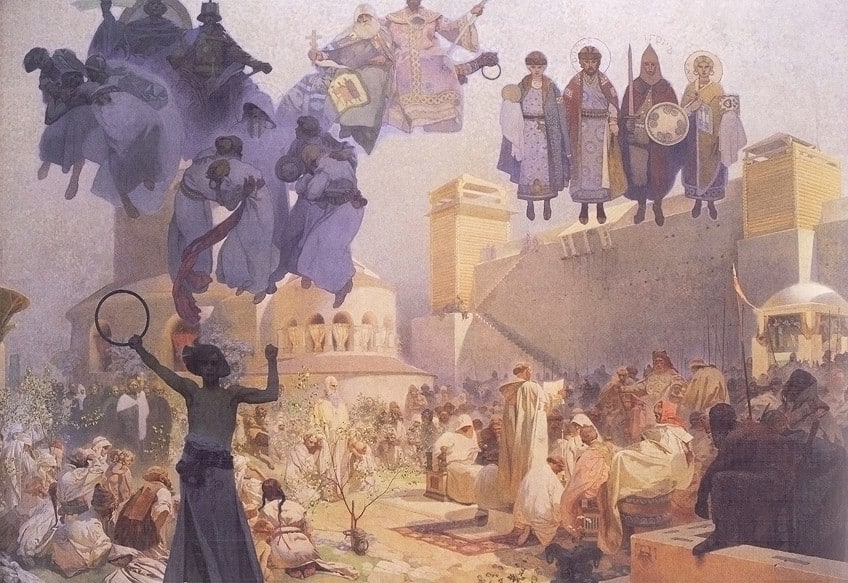
Alphonse Mucha’s artwork was distinguished by a distinctive and strongly decorative style, resulting in work that was both aesthetically appealing and enduring. Mucha’s legacy has survived in part owing to the continuous popularity of Art Nouveau and respect for his particular style. Here is a list of some of his most well-known works.
| Artwork | Date | Medium | Dimensions (cm) | Location |
| Job Cigarette Papers | 1896 | Color lithograph | 51 x 39 | Mucha Museum, Prague, Czech Republic |
| The Seasons | 1896 | Color lithograph | 54 x 75 | Mucha Museum, Prague, Czech Republic |
| Snake Bracelet with Ring | 1899 | Gold, enamel, opal, ruby, and diamond bracelet and ring | 21 x 6 | Mucha Museum, Prague, Czech Republic |
| Le Pater | 1899 | Illustrated book | 27 x 38 | Mucha Museum, Prague, Czech Republic |
| Slavia | 1908 | Oil and tempera on canvas | 93 x 154 | Kinsky Palace, Prague, Czech Republic |
| The Slavs in Their Original Homeland | 1912 | Oil and tempera on canvas | 610 x 810 | Prague City Gallery, Prague, Czech Republic |
That brings to an end our article on Alphonse Mucha’s life and art. Alphonse Mucha’s artworks were a perfect representation of the Art Nouveau style that he helped spread in the United States. It breathed fresh air into the staid art environment, revitalizing the perception of femininity, and serving as a reaction to the Victorian style as well as the increasingly industrialized world in which he found himself. Not only was Mucha’s work influential in his own time period, but it has also experienced a resurgence of interest in his style, specifically in the 1960s, when artists and designers embraced his flowing and natural contours and designs in their own works.
Take a look at our Alphonse Mucha paintings webstory here!
Frequently Asked Questions
Who Is Alphonse Mucha?
Alphonse Mucha was a Czech-born artist best renowned for his one-of-a-kind Art Nouveau images and designs. Mucha’s style, with its vertical orientation, sinuous lines, and soft pastel hues, revolutionized the poster design. He believed that the objective of his labor was to build bridges, rather than to destroy them. The artist started earning significant requests to build beautiful panels for individual residences as his career developed. He relocated to Prague after securing financial assistance for an intended series of grandiose paintings. While returning to his homeland, the artist worked on The Slav Epic (1910 – 1928) for nearly a decade. During the Nazi conquest of Prague in 1939, he was labeled a radical and questioned by the Gestapo while very ill. Later that year, on the 14th of July, 1939, he passed away, aged 78.
Why Is Alphonse Mucha Important?
Mucha’s work had a big influence on advertising and graphic design, especially in the area of poster design. His bold color choices, stylized imagery, and complex patterns contributed to the development of a new visual language for promotion and advertising. His distinctive Art Nouveau posters and drawings contributed to the definition of the style, which was born in the late 19th century as a response to the Victorian era’s art style. Alphonse Mucha’s artwork deviated from typical creative trends by focusing on organic and natural shapes, wavy lines, and an ornamental appeal. Mucha’s contributions helped to change the perception of decorative arts, which were once seen to be less important than fine art. Mucha showed that decorative art could be just as significant and valuable as any other type of art, by producing stunning and extravagant designs for anything from posters to jewelry.
Isabella studied at the University of Cape Town in South Africa and graduated with a Bachelor of Arts majoring in English Literature & Language and Psychology. Throughout her undergraduate years, she took Art History as an additional subject and absolutely loved it. Building on from her art history knowledge that began in high school, art has always been a particular area of fascination for her. From learning about artworks previously unknown to her, or sharpening her existing understanding of specific works, the ability to continue learning within this interesting sphere excites her greatly.
Her focal points of interest in art history encompass profiling specific artists and art movements, as it is these areas where she is able to really dig deep into the rich narrative of the art world. Additionally, she particularly enjoys exploring the different artistic styles of the 20th century, as well as the important impact that female artists have had on the development of art history.
Learn more about Isabella Meyer and the Art in Context Team.
Cite this Article
Isabella, Meyer, “Alphonse Mucha – Discover the Famous Art Nouveau Artist.” Art in Context. July 11, 2023. URL: https://artincontext.org/alphonse-mucha/
Meyer, I. (2023, 11 July). Alphonse Mucha – Discover the Famous Art Nouveau Artist. Art in Context. https://artincontext.org/alphonse-mucha/
Meyer, Isabella. “Alphonse Mucha – Discover the Famous Art Nouveau Artist.” Art in Context, July 11, 2023. https://artincontext.org/alphonse-mucha/.


